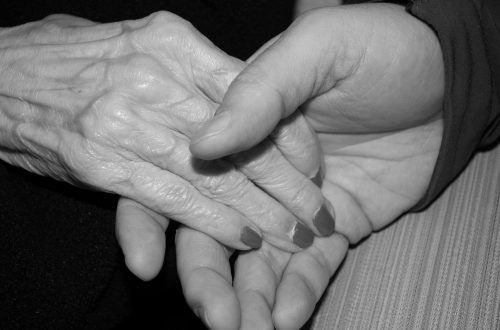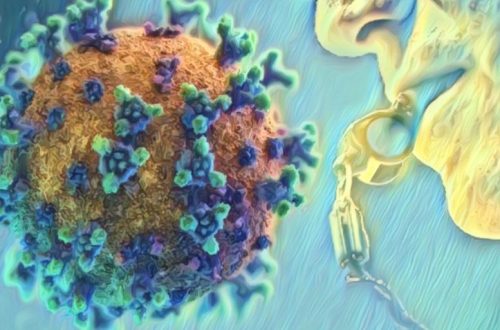Confused? How to Compartmentalize Fact from Fiction and Plausibility
The most common statement I hear from people, both on social media and in the real world, is “I’m so confused, I don’t know what or who to believe anymore.” Considering the level of intentional deception, manipulation tactics, and sensationalized stories floating around, that’s understandable. What is more significant is that because people have lost the ability to trust in others, it has created self-doubt in their ability to trust themselves to discern, which is perpetuating the confusion. So how do you slice through it all, separate it in your mind, and feel a sense of clarity without the mumbo jumbo of stories adding to all of this confusion?
For many, by realizing that you trusted others who ultimately betrayed you, it created a sense of self-doubt, reflection, and in some cases, guilt over decisions made. That in turn created a feeling of distrust in everyone, which is unhealthy. If you can’t trust in others and you can’t trust in yourself, that leaves quite a void. Rebuilding that trust in yourself and removing the self-doubt is the very thing that allows you to discern what and who to trust. Choosing to bypass that step, creates the desire to find truth anywhere you can outside of yourself, even if it means believing in a false story or false person because it’s the story that would make you the happiest. That creates an entire breakdown of the ability to discern and becomes a vicious circle. But the reality is, you are really just yearning for truth – your truth – to return to you. Resolve that, and figure out what truth is for you, and you will find freedom.
Betrayal can be difficult to work through, but it’s an important step, so as to release the attachment to those emotions, and see the true beauty and strength within yourself. You were taken advantage of, manipulated, made vulnerable, and totally deceived. It is perfectly understandable that you would feel angered, hurt, and betrayed, but reconciling it all is what’s necessary to bring everything into focus, with clarity. It’s equivalent to being taken out at the knees and then told to run a marathon. Heal what needs to be healed.
Compartmentalizing Information
Think of your brain as a filing cabinet. Keep it organized and clear of clutter, and you will begin to feel the confusion melting away. But how? Learn to compartmentalize information as it comes at you, before loading it up into your filing cabinet, and be sure to have a trash bin nearby. Discernment is the key, and with practice, it will become an automated process of compartmentalizing as time goes on. Creating a method for how best to utilize your time and energy is crucial so you don’t burn out. Everyone is not only trying to digest an incredible amount of information coming at them but are also feeling heightened levels of stress because of the in-home quarantine due to the coronavirus. Grounding yourself, maintaining balance, and taking in information in bite size pieces is so important right now. So, what do these compartments look like?
When information comes at you, train yourself to process it in a way that you can effectively discern it.
- Do I see points of evidence, and is it legitimate evidence?
- Is there enough evidence to lock it up, or is it just enough to be plausible?
- Is this a nice story, but doesn’t provide any proof, making it a piece of fiction?
- Are my emotions being triggered and tactics being used?
Once discernment becomes second nature and you have removed self-doubt, at all times, listen your gut, and use that intuition. As time goes on, it will become faster and faster to discern information and fiction will sail right into the trash, removing clutter and confusion.
The Fact Compartment
When absorbing information, the first thing to look for is the evidence. What constitutes as evidence?
• Source links that provide proof
• Documentation to back it up
• Statements, confessions, and quotes directly from the source in question
• Unaltered video footage
• Court documents
• Criminal records and convictions
• Historical data
• Actual data provided by the source of who the story is about
• Maps, addresses, and connecting locations
• Property records
• Tax documents
• The money – how it is spent and how it connects to everyone in the story
• Business relationships and friendships with deep ties
If you are reviewing information and do not see a single item from the list above, the source that is providing the information either doesn’t have the evidence, is trying to trick you, is sharing partial truth to push a hoax, or is downright lazy and doesn’t deserve your attention. You might say, “but it sounds so true, maybe I should dig and see if I can find the proof myself.” Sure, you can do that, but you shouldn’t have to, as it should have been provided by the source. If you want to store it in the plausibility compartment, rather than drop it into fiction, that is your choice, but your plausibility compartment will eventually hit overload and confuse you. Stick with the evidence and make darn sure it all adds up. Be wary of partial truths with detours to entice, suck up your time and energy, and hope that you will circulate it to create confusion.
Once you have assessed it to be totally accurate, store it in the fact compartment and move on, or in some cases – do something about it, such as advocating for a cause or making others aware of it. You may just get more information on it in the future that connects more dots for you. Great! Access that file cabinet!
I host over 80 resources and tools for fact checking and deep digging right here on Corey’s Digs.
The Plausibility Compartment
If you have a few key pieces of evidence but are missing the overall connecting dots that prove it to be true, this gets filed under plausibility. You can choose to dig further, or you can choose to store it in the plausibility compartment until more dots pop up in the future. You may find it helpful to keep a document with “fact” and “plausibility” notes if you have the need to track the information, and if it frees up clutter in your mind. When new information surfaces, you can open the file cabinet, access the older information, and connect more dots! When sharing plausible information, it’s always a good idea to explain to people that it’s a “theory” with some compelling facts, but you don’t have the complete story to prove it to be fact yet. As much as you may wish for a story to be true, stating it as fact, doesn’t do anyone any good. In fact, it just creates more confusion and can become a big energy sucker for thousands of people. We’ve witnessed this time and time again from mainstream news propaganda. It’s always a good idea to take a daily measure of how you are expending your energy, where you are devoting your time, and how relevant it is to the whole of your life.
A great example of a “plausible” story is the question around whether or not Bill and Hillary Clinton are involved with child trafficking. Many of us have seen the testimony in the OIG report indicating all of the emails on Anthony Weiner’s laptop between Huma Abedin and Hillary Clinton, along with notes written in the report stating “Clinton Foundation” above the words “crimes against children”. In fact, Attorney Sidney Powell spoke about this in a recent speech she gave. So, we have information and testimony from an OIG report. In addition to this, when you review all of the individuals intimately connected with the Clintons, you discover an incredible amount of people who have been convicted of sexual crimes against children. Some of these individuals worked directly with Hillary Clinton, even after she knew they were convicted, such as George Nader. So, we have convictions and actual court documents. Finally, when you review her timeline of work to do with children, it is rather alarming, not to mention all of her current work on over 20 islands in the Caribbean along the child trafficking routes. Whereas none of this is 100% conclusive evidence to say beyond a shadow of a doubt that Bill and Hillary Clinton are involved with child trafficking, there are so many pieces of evidence that it must go into the plausibility compartment and be revived at a later date when more information surfaces. There is no need for it to clutter the brain, simply store it in its compartment and it will be triggered automatically when new pieces of evidence arise.
The Fiction Compartment
Fiction most definitely makes up the bulk of the stories circulating in the world, with no thanks to the mainstream news. This means that the majority of most people’s time is spent chasing their tail, hence all of the confusion. I’ve witnessed entire days, sometimes weeks being spent on thousands of people chasing fiction.
Where do the fiction stories come from?
• Primarily mainstream news
• Naïve individuals who believed a story that had no proof, then shared it with the world
• Politicians and government scheming
• Disinfo agents on social media, and there are a lot
• Many celebrities from Hollywood, the music industry, and sports push propaganda
• Everyday people that have a story in their mind about how something is, or what they want to believe, without ever doing any research, share their fantasies with friends and co-workers, and those that want to believe it continue to share it as though it is fact
• The upper echelons of the healthcare industry
• Countless prominent individuals such as George Soros, and hundreds of agencies whose sole purpose is to market a narrative
Example tactics:
• “Sources say” is a common one, especially coming from sources you already don’t trust
• Spinning a story that has the makings of a legitimate story, but no proof is provided
• Playing on people’s emotions and delivering a story on a silver platter, with no proof
• Trickery, such as photos or videos that aren’t as they seem, like shortened clips to take things out of context, photos of an incorrect location to mislead you, etc.
• Manipulating stories to include partial truths with pieces of evidence that have little to do with the accusations being made, while plumping the story with emotional triggers
• Projection is the name of the game, and can oftentimes be debunked relatively quickly if people do the work
• The sliding scale of truth. Disinfo agents begin with 100% and over the course of several months, work their way down to about 90% truth. Once they’ve done a good job and scooped up a big following, the slide keeps moving, until they can either flip their followers to an opposite perspective from their original truth or utilize them to attack legitimate sources putting out 100% truth.
The system has raised everyone to trust the news, teachers, government, doctors, elders, and all areas of law enforcement and our justice system. Unfortunately, many at the top levels are corrupt and protecting a slave system that has long been in place. It is all unraveling and has created much confusion, in addition to a lot of self-doubt. When people lost trust in the “system,” they also lost trust in themselves. How does one trust themselves, when they mistakenly allowed themselves to trust in all of these corrupt systems? It’s a psychological mind game. Let it go. Forgive yourself. Recognize that you see through it and can move past it. Know that you can rise above this betrayal and are capable of making good decisions. You must remove the self-doubt in order to eliminate the confusion, otherwise you will continue the cycle. Also, by putting out a blanket statement, “I trust no one,” will only box you in and create more confusion. By trusting no one, that is telling your mind that everything is false. Everything. If you want to free your mind from confusion, you must master discernment and remove self-doubt. Bottom line. Do the work required to heal from the betrayal – you owe it to yourself.
Keep Your Mind Clear
Why is this practice an important tool? It trains your mind to see with clarity, to process information wisely, and to rid yourself of all the clutter that is causing so much confusion. It removes your self-doubt, strengthens your resolve, and cuts to the chase. It allows you to feel a sense of balance, stability, and security. And above all, it restores your faith in yourself and in humanity, because those that betrayed you do not make up the whole of humanity. Don’t close the world out. Access your heart, open your heart, and let it shine. Discernment will follow.












8 Comments
Melissa
What if the whole point of the Coronavirus is to hack the government? They infect people with a virus that has a high infection rate and a low death rate . This goes to government employees. To where they shut down offices and hack the computers of those infected and gain government secrets.
Cheryl
This was a much needed article I have had every emotion you addressed through following Q. I had lost trust in myself to discern truth from fiction. Thank you for the guidance it is much appreciated
Arzu
Thank you, so well explained .
L Harvey
Corey I appreciate your time and effort in your digs and articles.
One part of this article made me pause in frustration; “But the reality is, you are really just yearning for truth – your truth – to return to you.”
What exactly is ‘your truth’ and why has it been so heavily pushed over ‘the truth’?
Curious about your thoughts.
Diane
Definitely feeling overwhelmed with information at this time.
This article gave me some calm, thank you so kindly!!
Cyrus
@ L Harvey ‘your truth’ = confirmation bias
As Bill Hicks once said when talking about the Alex Jones character he just created: “People just want to have their biases confirmed”
Eli
The article is well-explained how we should be calm when reading any information. Anyway, it could be a good guidance if taking the Thrive movie as an example to debunk. So the conclusion is not enough. People shouldn’t trust anyone else unless their family because one demands your trust is not usually a good person.
Debra K
This was very helpful, Corey. I have been a “watchman” trying to inform others for so long but lately, it’s overwhelming and sickening in many cases. I have to take a break sometimes and also tell myself some things are out of my control and I have to guve it to God. Thank you for all you do